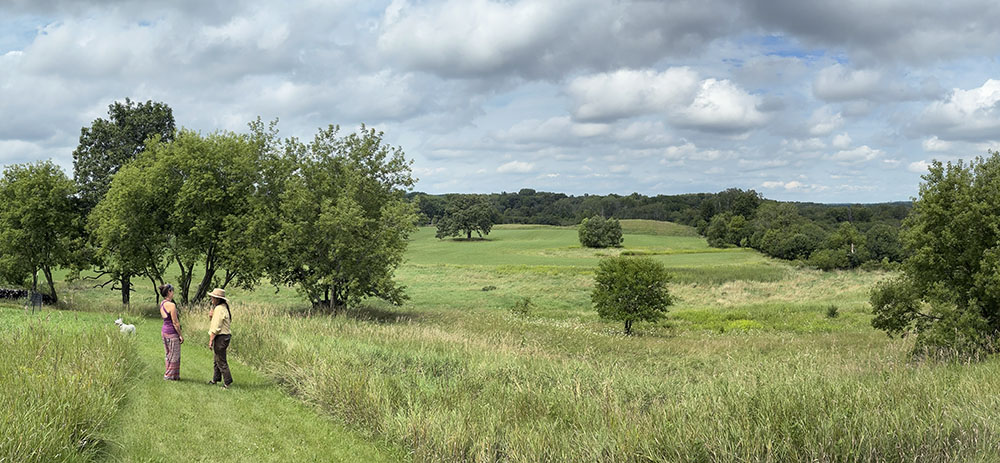
Rachel Catlett: Artist in Residence at Pearl Forge Farm Conservancy
August 25, 2025 | Topics: featured artist
The Natural Realm presents Rachel Catlett, who is among 10 artists participating in a year-long residency program called ARTservancy, now in its sixth year. ARTservancy is a collaboration between Gallery 224 in Port Washington and the Restoring Lands Land Trust, (formerly Ozaukee Washington Land Trust and River Revitalization Foundation). Milwaukee Area Land Conservancy, Tall Pines Conservancy, and Lake Michigan Bird Observatory. The mission of ARTservancy is to promote the visionary work of both the artists and conservationists. Each artist has selected a preserve to spend time in and to engage with.
Reflections from the Artist
Family Farm Bed is a multimedia installation that blends my life as a working farmer with my practice as a visual artist. It is the central project of my year-long ARTservancy Residency through Studio 224 and Tall Pines Conservancy, a collaborative creative exploration of Pearl Forge Conservancy—a 95-acre, multi-generational farm in Genesee, Wisconsin.
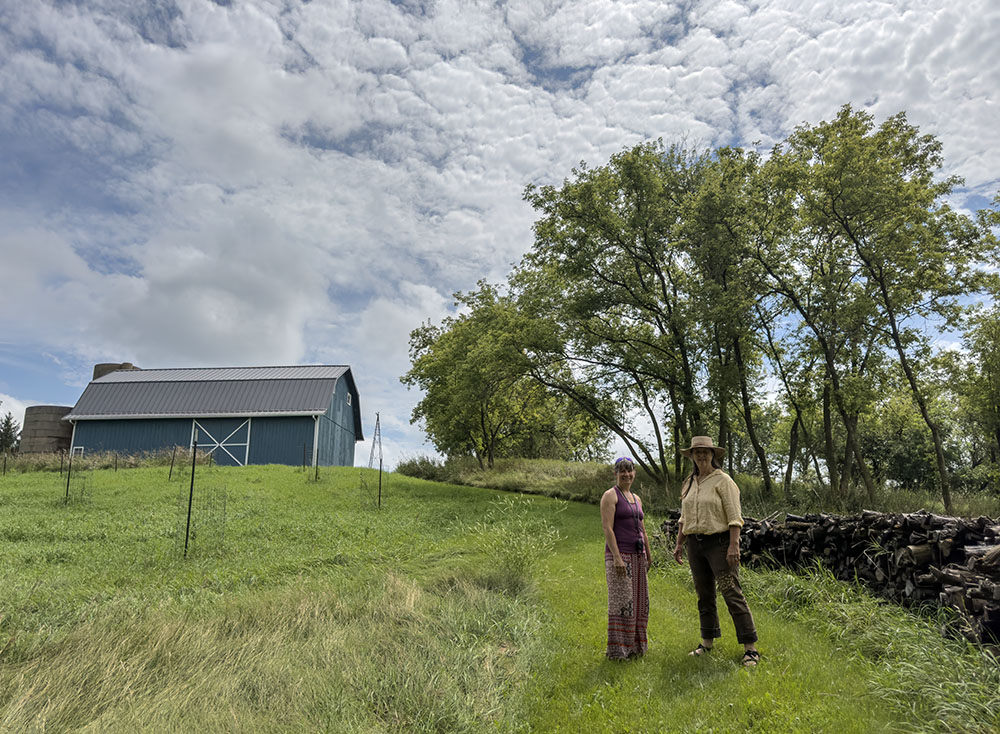
The installation centers on a bed, fully made up with a story quilt whose imagery grows out of a year of fieldwork: visiting the farm, walking its fields and wetlands, interviewing the family who lives and works there, participating in restoration days, cataloging the farm’s flora and fauna, sketching and painting on site, and simply listening to the rhythms of the land. This quilt will be a visual record of a year of stewardship—part field journal, part family album, part ecological map.

The mattress will be made from felted black and brown wool from my own flock of Shetland and Icelandic sheep, raised on my farm with the same care and attention to place that the Pearl Forge family gives to theirs. Embedded in this felt will be threads, fabric messages, and organic materials foraged from the Conservancy’s fields, prairies, and wetlands—literal fragments of the land, held within the piece. The pillows, quilt, and bed skirt will be fashioned from worn, salvaged textiles: recycled linens, old work clothes, and scraps of cloth too beloved to throw away. This reuse honors the long tradition of farm women who transformed the worn and frayed into warmth and beauty. The bed skirt will incorporate woven cattails harvested from wetlands that connect our two farms, bringing together the shared ecology of our work.
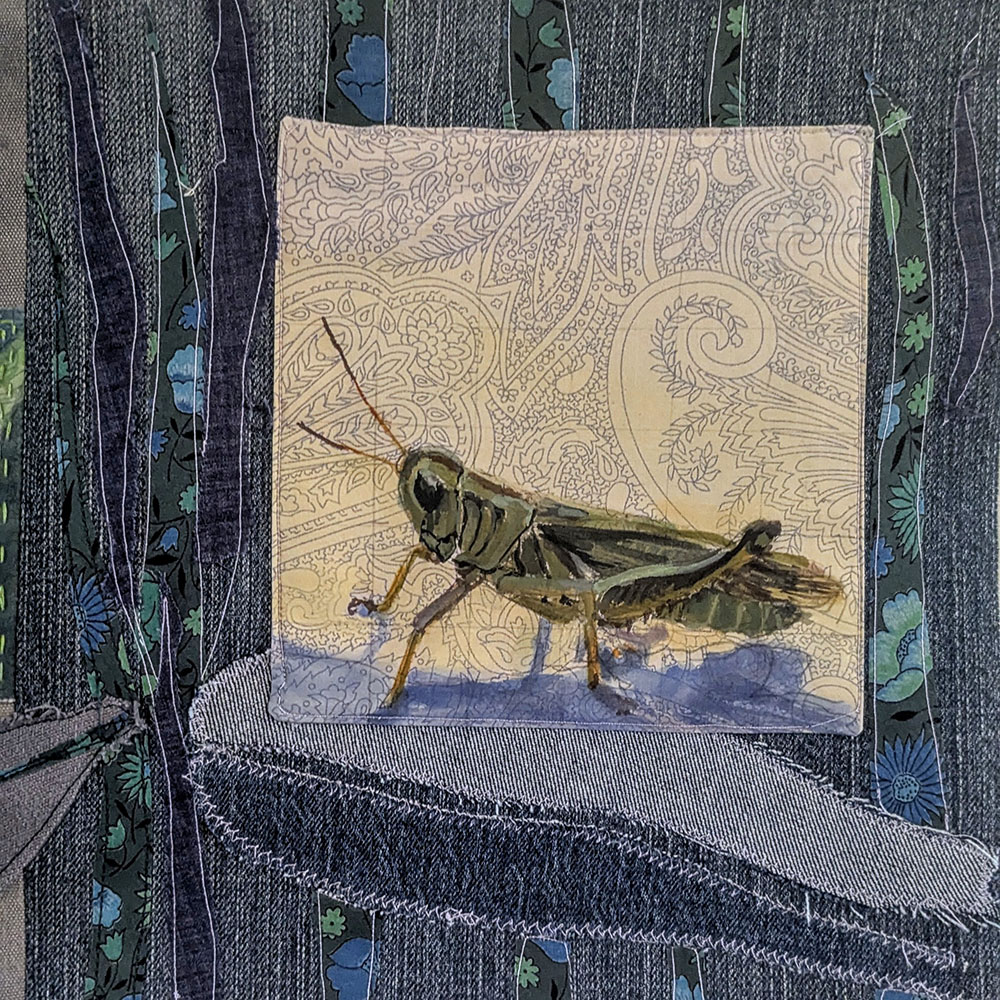
As both a farmer and an artist, I am continually drawn to the intimate relationship between farmers and the land they tend. Stewardship is not a distant or abstract idea here—it is tactile, physical, emotional. It shapes the farmer’s days and seasons, and in turn, the farmer shapes the land’s health and resilience. The Family Farm Bed speaks directly to that intimacy. A bed is where we begin and end our days, where we rest, dream, heal, and sometimes say goodbye. On a farm, the land plays that same role: it sustains, nurtures, and receives us, over and over again, across generations.
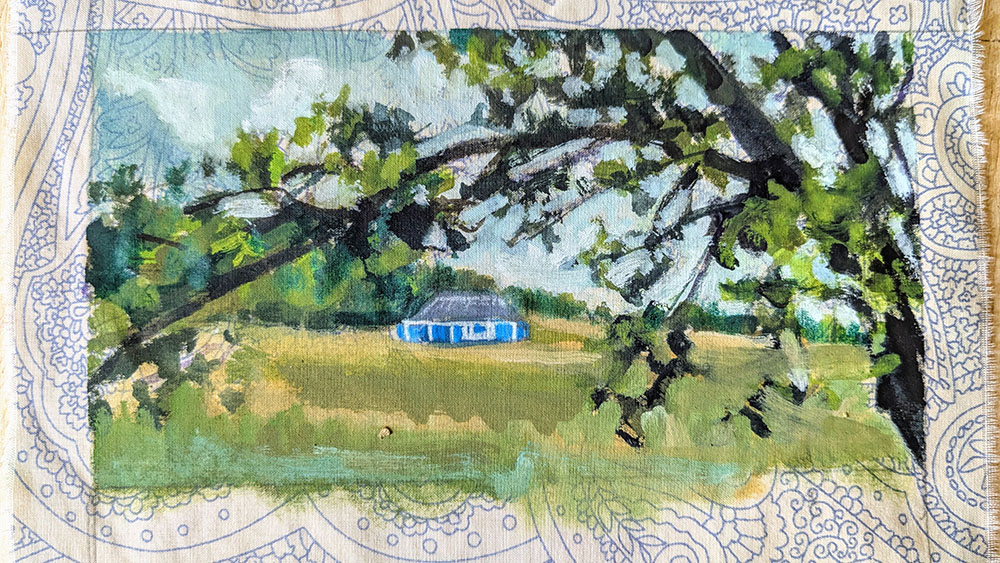
Process and Timeline
From August 2025 through August 2026, the piece will take shape in step with the natural cycles of growth, harvest, and seasonal change. The quilt will be slowly assembled, its panels created as I gather drawings, stitched motifs, and printed patterns from my field visits. The felted mattress pad will be processed and stitched, seeded with gathered materials that will themselves carry the DNA of the land. The bed skirt’s cattails will be harvested, dried, and woven after the summer’s growth, timed to the plants’ natural readiness.

The making of Family Farm Bed will not be a solitary process. Three public community events—Felting Day, Quilting Bee, and Weaving Circle—will invite the public to experience the land, participate in the making, and learn the history and cultural significance of each craft. Felting Day will immerse participants in the process of transforming raw wool into dense, warm fabric. Quilting Bee will revive a communal art form that was historically both a social gathering and an act of practical beauty. Weaving Circle will connect people to the tactile, rhythmic work of weaving cattails, a plant indigenous to our shared wetlands. These events will serve as living classrooms, blending environmental education, local history, and hands-on artistry.
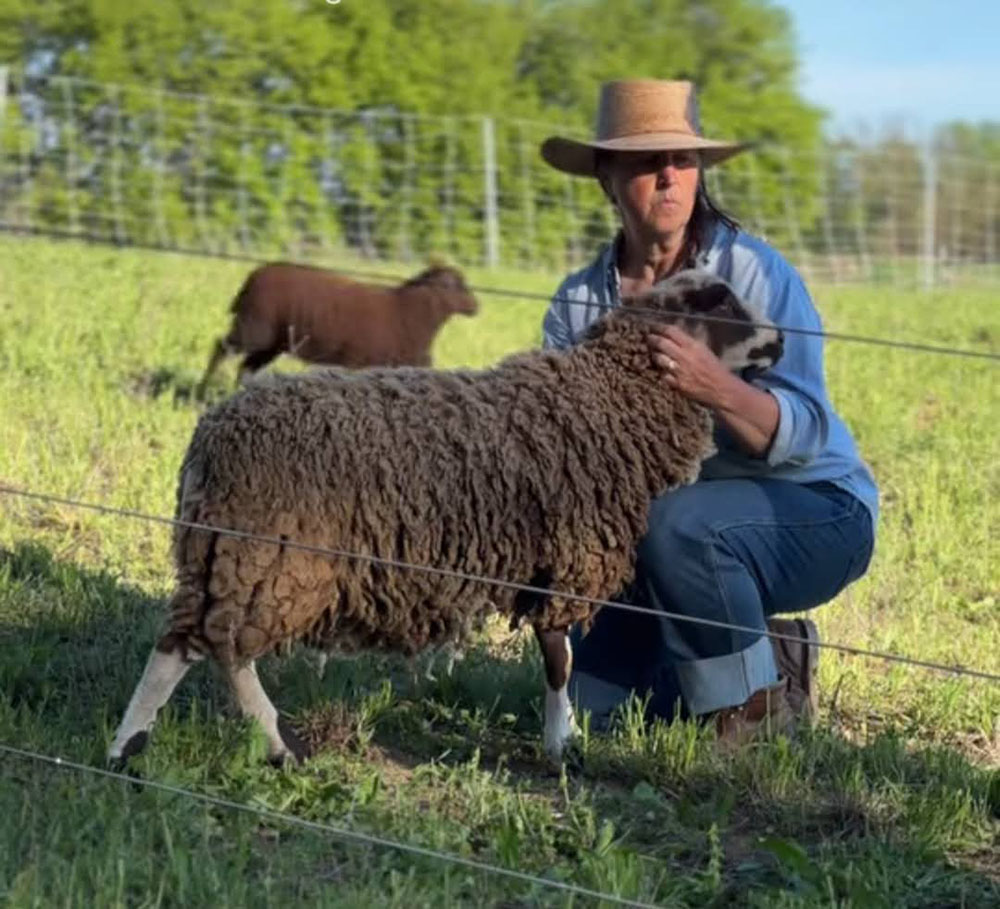
In August 2026, the work will come together in the final act: I will “make the bed.” This installation will first be exhibited at Gallery 224 in September–October 2026 as the culmination of my ARTservancy Residency. The opening will bring together participants, artists, conservation partners, and community members.
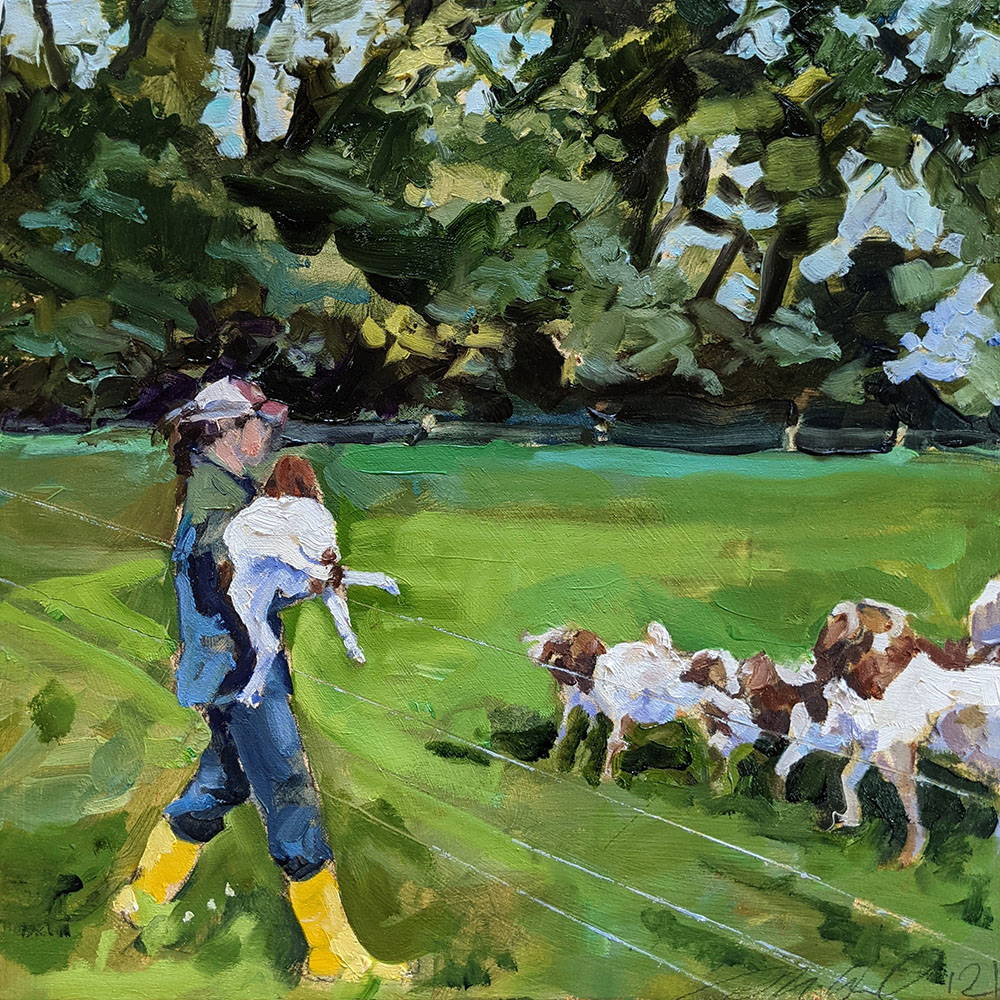
Materiality and Symbolism
Every element of Family Farm Bed is carefully chosen for its material qualities, its cultural history, and its ability to carry meaning. The felted wool mattress is both literal comfort and a living archive of my own farm’s flock. The seeds embedded in it hold the potential for future life, echoing the regenerative nature of healthy agricultural systems. The quilt, built from recycled cloth, draws on the rural American tradition of storytelling through fabric—where patterns, colors, and stitched images recorded family histories, significant events, and the changing seasons.
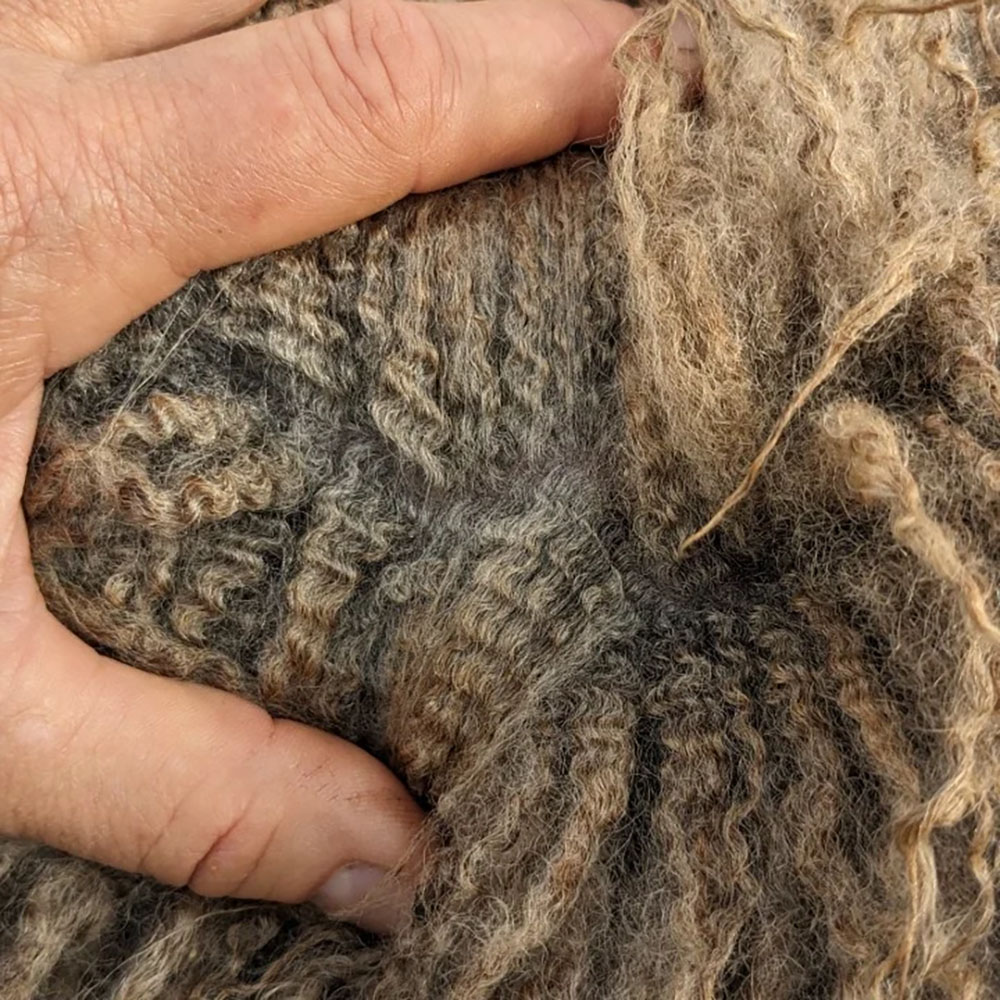
Farmers have long practiced resourcefulness out of necessity: old shirts became rags, rags became quilt pieces, broken tools were repaired or repurposed, worn wagon wheels became garden trellises. These acts of reuse were not merely frugal; they were creative, life-affirming responses to the cycles of work and rest, scarcity and abundance. In the same way, the materials of Family Farm Bed are drawn from the lived environment of both farms, carrying with them the marks of labor and the residue of time.
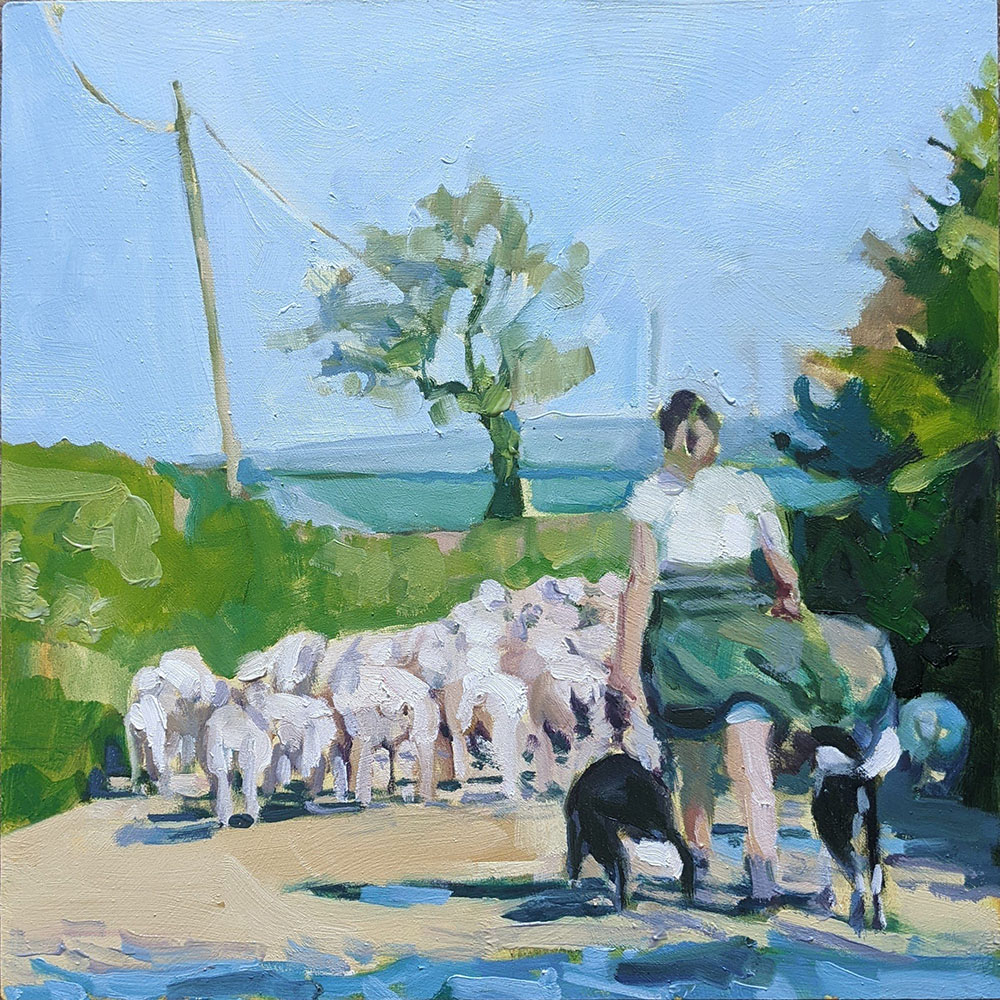
The cattails in the bed skirt bring in another layer of meaning: they are a native wetland plant, a habitat builder and water purifier. Woven into the fabric of the bed, they stand as a reminder that healthy farms are not monocultures but diverse ecosystems where plants, animals, and people coexist in mutual dependence.
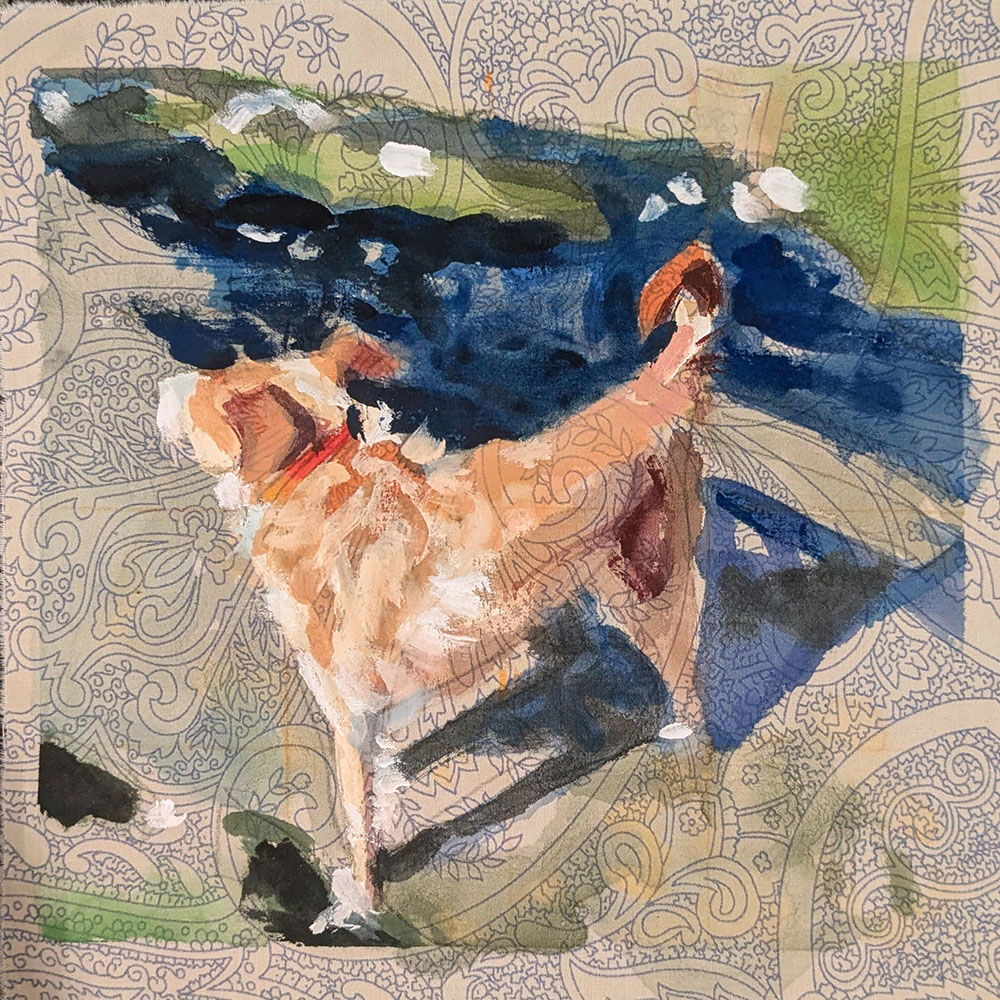
Themes and Intentions
At its heart, Family Farm Bed is about connection—between people and land, between craft and environment, between past and present. It asks viewers to see farmers not only as food producers but as caretakers of complex, living systems. A farmer’s work is not limited to planting and harvesting; it is a constant negotiation with weather, soil, plants, and animals, requiring both physical labor and ecological awareness.
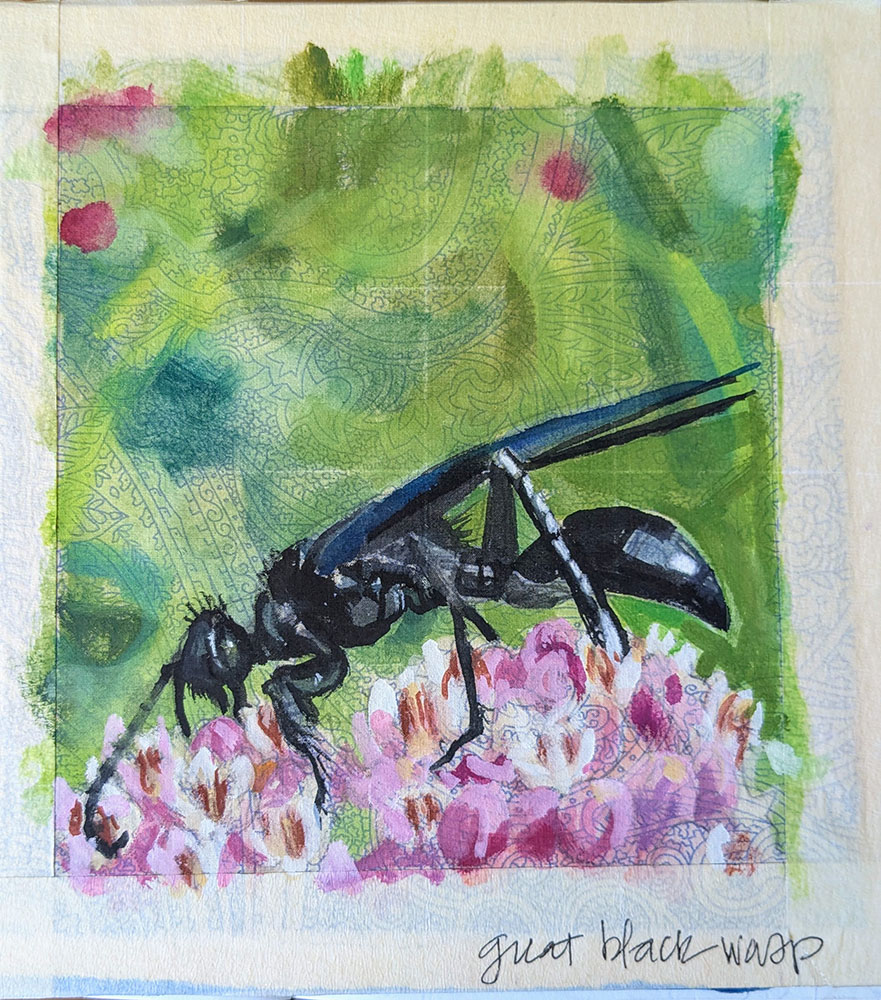
In the modern world, many people experience their environment as something separate from themselves—something to visit, to admire, or to escape into. For farmers, there is no such division. The land is the workplace, the home, the source of sustenance, and the place of rest. The bed becomes a perfect metaphor: it is where we are most ourselves, where our bodies and minds let go into the trust of place.
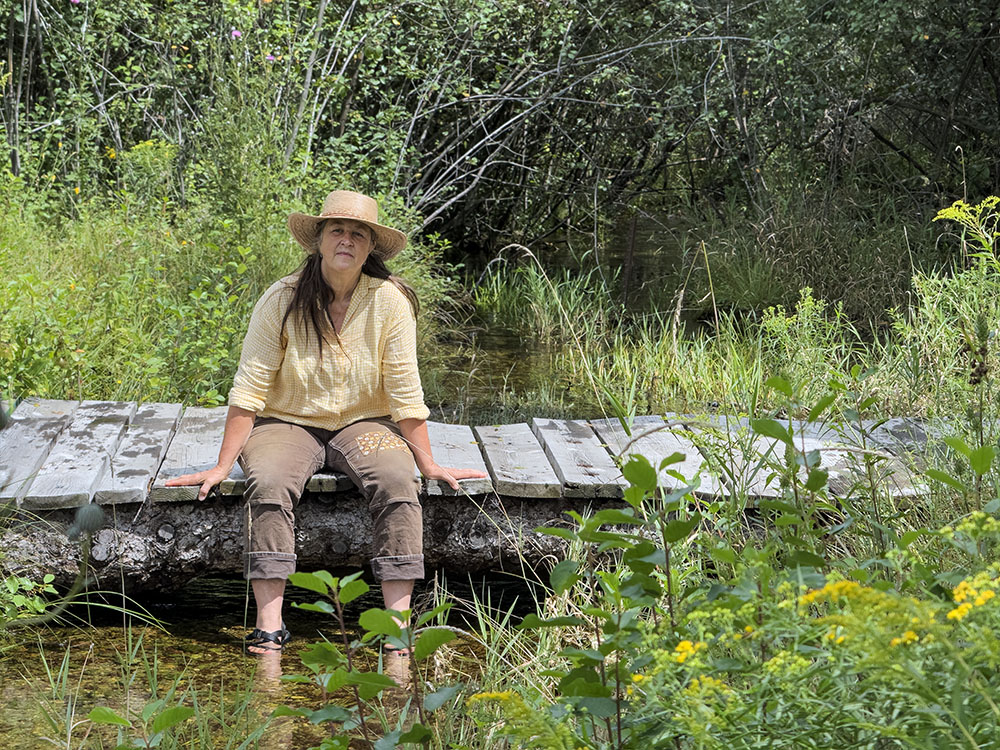
By situating this work in a gallery space, I hope to bridge the gap between urban or non-farming audiences and the lived reality of agricultural life. The installation invites viewers to consider the origins of the food and fiber they consume, the hands that steward those resources, all the creatures and diversity in a farm ecosystem, and the environmental impact of those daily choices.
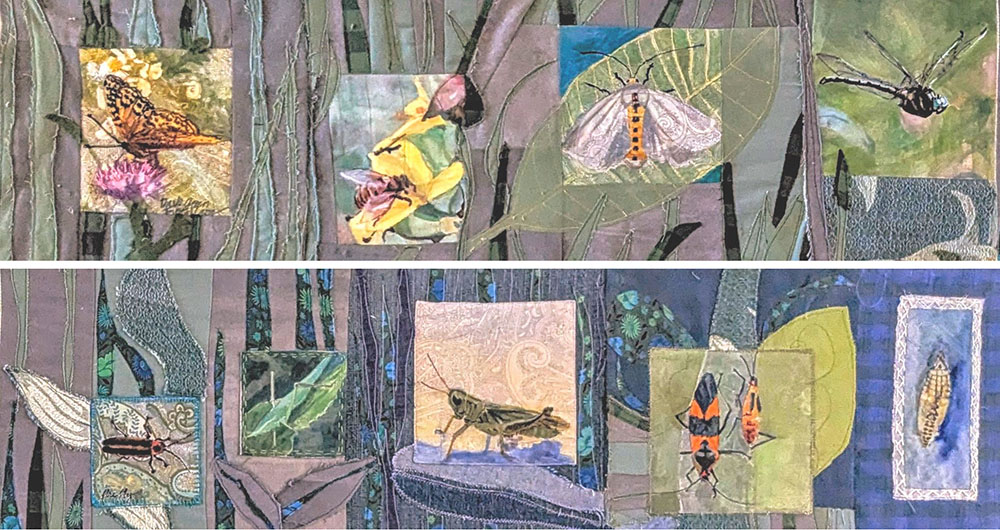
Family Farm Bed also honors the social and cultural dimensions of rural life. Quilting bees, weaving circles, and communal work days were historically more than just practical collaborations—they were moments of shared stories, songs, and support networks. By incorporating public events into the making of the piece, I aim to revive those traditions in a contemporary context, allowing participants to become co-creators and to leave their own mark on the work.
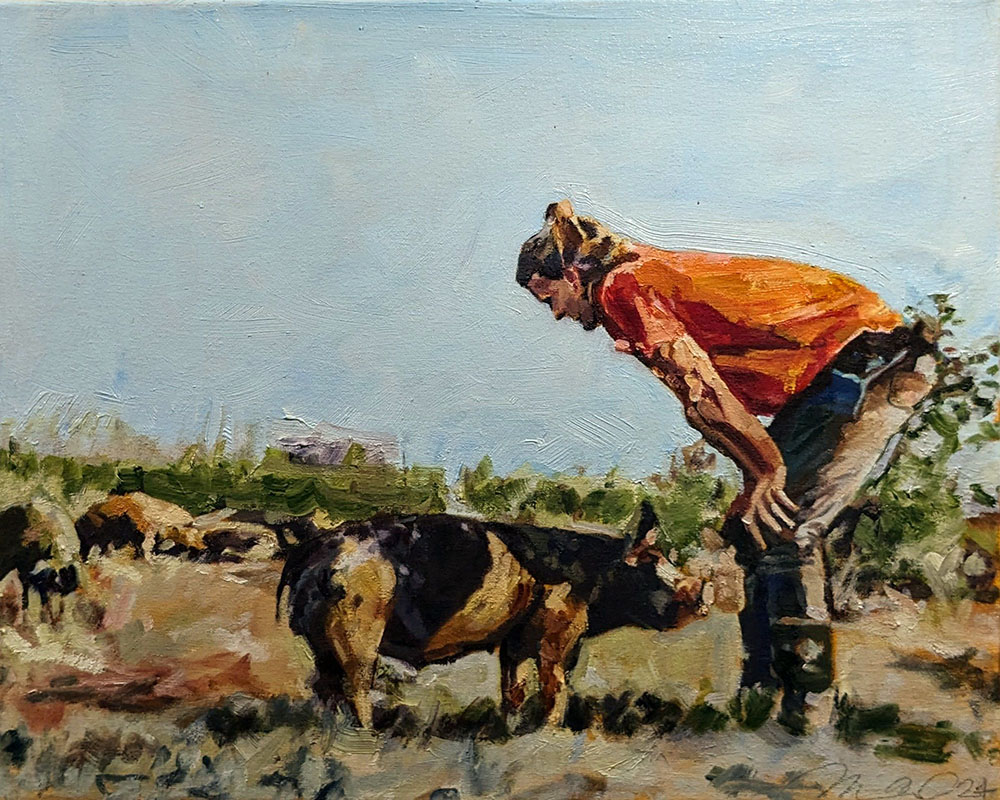
Broader Context
This project sits at the intersection of environmental art, craft tradition, and agricultural life. It aligns with a growing movement among contemporary artists to use natural, locally sourced, and repurposed materials as a means of exploring ecological responsibility. It also continues the long lineage of artists who have worked in and with the land, from the farm women whose quilts were both shelter and narrative, to craftspeople who shaped wood, fiber, and metal from their immediate surroundings.

Pearl Forge Conservancy itself embodies the values this piece celebrates: multi-generational stewardship, biodiversity restoration, and a balance between working agriculture and ecological preservation. My year at the Conservancy has revealed how these values are lived daily—in decisions about which crops are grown in which fields, in careful invasive species removal, in the nurturing of wetlands and woodlands alongside fields and pastures.
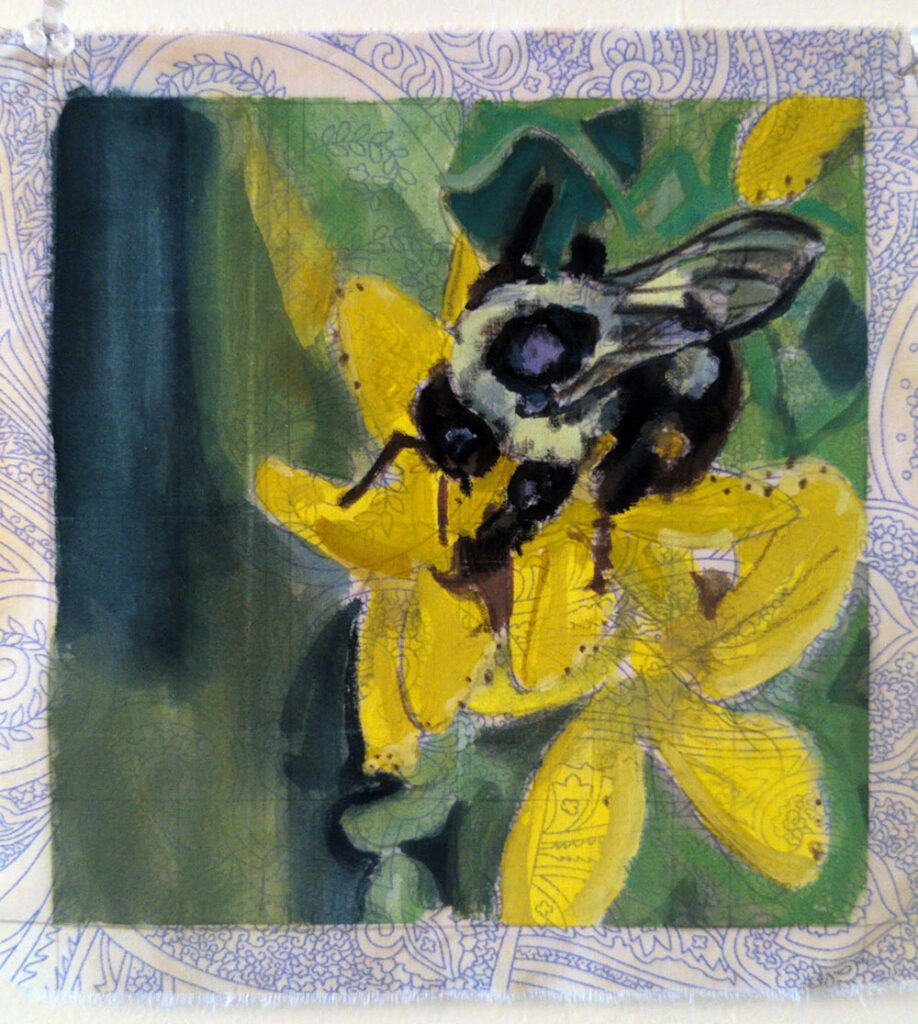
Family Farm Bed is, ultimately, a portrait—not of a single person, but of a relationship. It is a portrait of a family and their land, of the reciprocal care between a farmer and an ecosystem, and of the enduring traditions that have sustained rural communities for centuries.
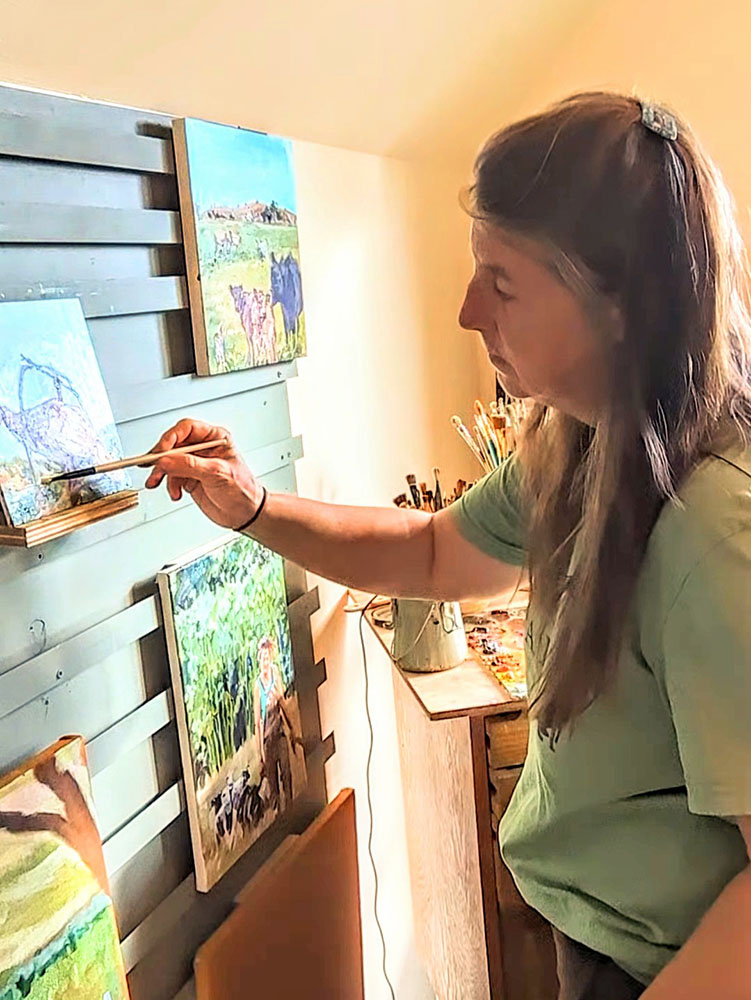
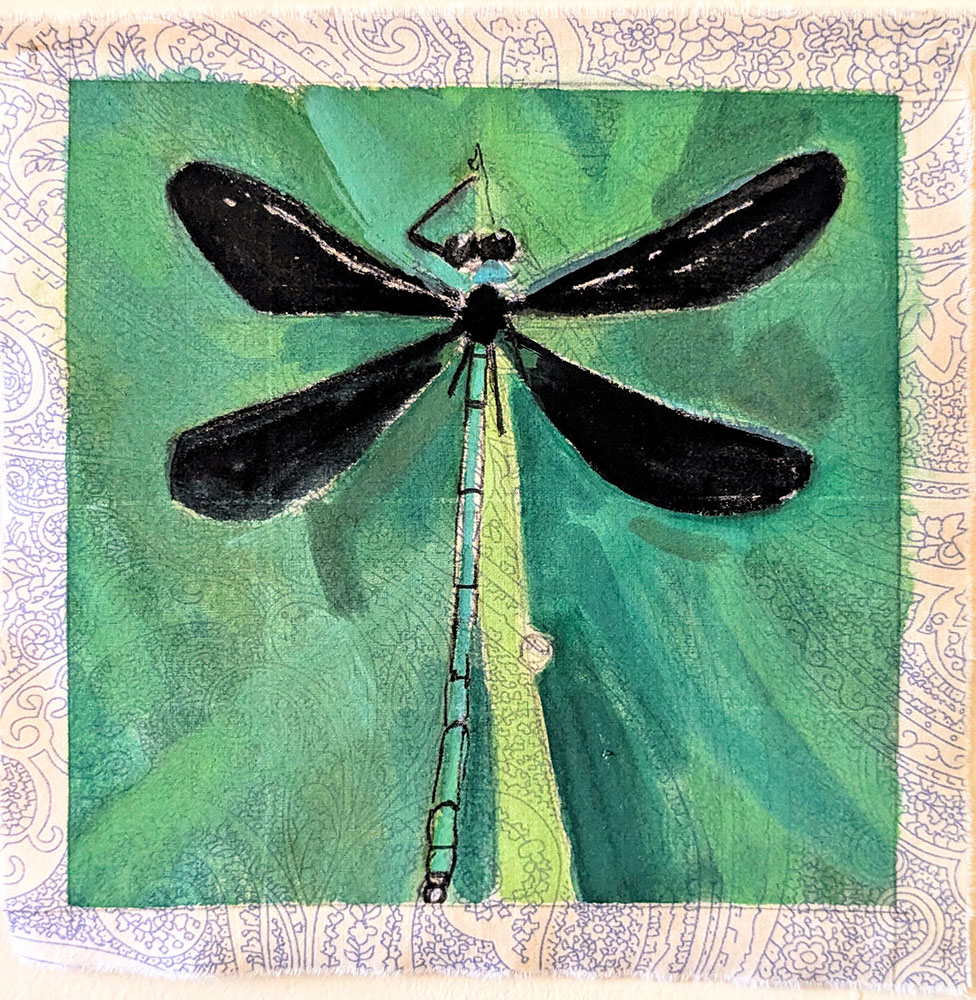
BIO
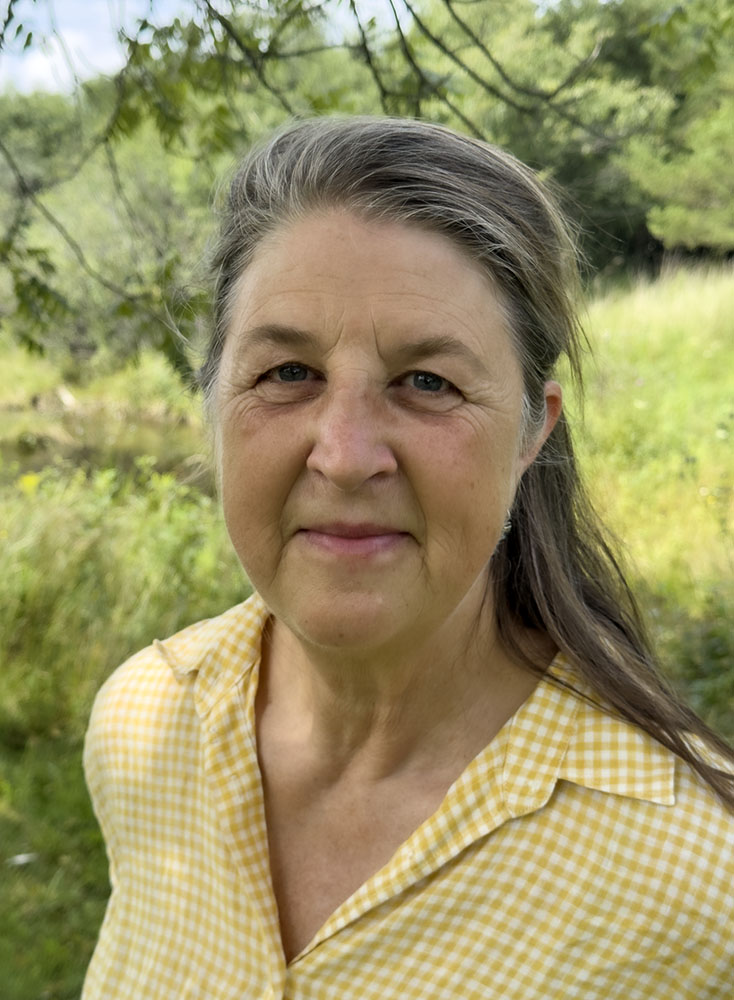
Rachel Catlett is an artist and farmer living on Brown Dog Farm, her regenerative sheep farm in Sugar Creek, Wisconsin. Trained in painting (BFA, Southern Methodist University) and printmaking (MFA, Colorado State University), she creates work rooted in the rhythms of rural life and the labor of farmers and ranchers. After a 30-year career in ornamental horticulture, she returned to her family’s ranching heritage, raising heritage sheep and goats for wool and meat while practicing rotational grazing to restore the land. Catlett exhibits regionally in the Midwest, and maintains an active studio practice alongside teaching in her rural community.
Website: browndogfarmwi.com
This residency is sponsored by Tall Pines Conservancy. Additional ARTservancy artists in residence at other sites can be found here.
Related stories:
Megan Muthupandiyan: Artist in Residence at Tall Pines Conservancy
Amanda Tollefson: Artist in Residence at Oconomowoc River Conservancy Park
Frankie Garr: Artist in Residence at Tall Pines Conservancy
This is the latest in our series of featured artists, which is intended to showcase the work of photographers, artists, writers and other creative individuals in our community whose subjects or themes relate in some broad sense to nature, urban nature, people in nature, etc. To see a list of previously featured artists, click here. The work of the 2022-2023 ARTservancy artists in residence is currently being exhibited monthly at Gallery 224. To meet the other ARTservancy artists in residence, click here and then use the drop-down menu.
All images courtesy of the artist, except as noted. The featured photo at the top of Rachel Catlett and Becky Fedak at Pearl Forge Farm Conservancy is by Eddee Daniel. Tall Pines Conservancy is a project partner of A Wealth of Nature.
About Preserve Our Parks
Preserve Our Parks, Inc. is an independent nonprofit organization dedicated to the preservation of parks and green spaces. Our mission: To advocate for and promote Milwaukee area parks and open spaces and to strive to protect the tenets of Wisconsin’s Public Trust Doctrine.
For more than 25 years, we have been a leader in advocating for the protection of Milwaukee County park lands, halting many proposals to develop, privatize, or sell local parkland and lakefront spaces. More information about POP, including past accomplishments, is available at www.preserveourparks.org.

